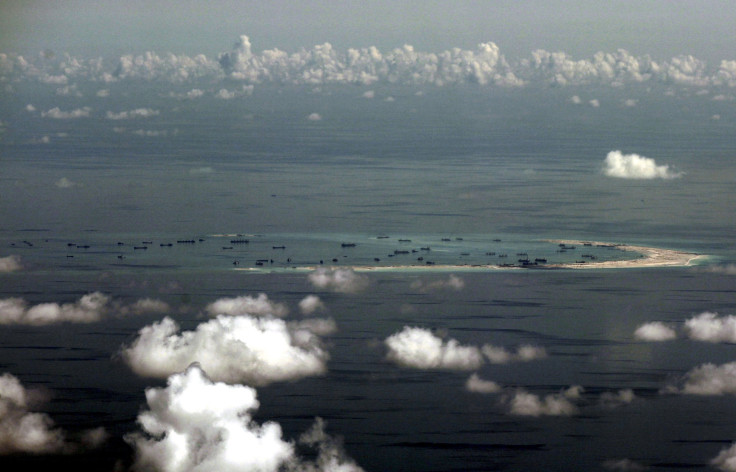South China Sea Controversy: Beijing Should Reaffirm It Won’t Deploy Military Aircraft On Spratly Islands, Pentagon Says

The United States urged China Tuesday to reaffirm that it had no plans to station military aircraft on South China Sea’s disputed Spratly Islands. The appeal came after China said its military aircraft made its first public landing on the Fiery Cross Reef on South China Sea to evacuate workers at a construction site on the reef after receiving an emergency call.
“We urge China to reaffirm that it has no plans to deploy or rotate military aircraft at its outposts in the Spratlys, in keeping with China’s prior assurances,” Garry Ross, a Pentagon spokesman said, according to Reuters.
Ross also pushed other countries, involved in the territorial dispute, to clarify their claims on the South China Sea in accordance with international law and “to avoid unilateral actions that change the status quo.”
U.S. State Department spokesman John Kirby said that it was “difficult to understand” why Beijing would have had to use a military aircraft for the evacuation of the workers, Reuters reported. Kirby added that it was “a problem” that the workers, in fact, had been working on “infrastructure improvements of a military nature.”
On Monday, the Chinese military aircraft sighting at the Spratlys drew protest from the U.S. military.
“We’re aware that a Chinese military aircraft landed at Fiery Cross Reef on Sunday in what China described as a humanitarian operation to evacuate three ill workers,” Pentagon spokesman Capt. Jeff Davis reportedly. “It is unclear why the Chinese used a military aircraft, as opposed to a civilian one.”
However, China’s defense ministry dismissed Washington’s comments, saying Beijing has indisputable sovereignty over the Spratly Islands and that the U.S. did not have any right to comment on the communist country’s building works and defensive facilities.
The defense ministry also said that it was Chinese military’s tradition to “wholeheartedly serve the people” and assist those in need.
“In sharp contrast, the U.S. side is expressing doubts about whether it's a military or civilian aircraft at a time when somebody's life is in danger,” the ministry reportedly said. “We cannot but ask: if a U.S. citizen suddenly took ill on U.S. soil, would the U.S. military look on with folded arms?”
Beijing, which has accused the U.S. of militarizing the region, has been expanding its claim in the South China Sea and has built three runways on the Spratly archipelago. However, the world’s second-largest economy has repeatedly defended its actions, saying it does not have any intentions of starting a conflict and that its aircraft facilities will maintain safety in the region.
Various areas in the South China Sea region, which has been long contested, have also been claimed by Brunei, Malaysia, the Philippines, Taiwan and Vietnam.
© Copyright IBTimes 2025. All rights reserved.





















